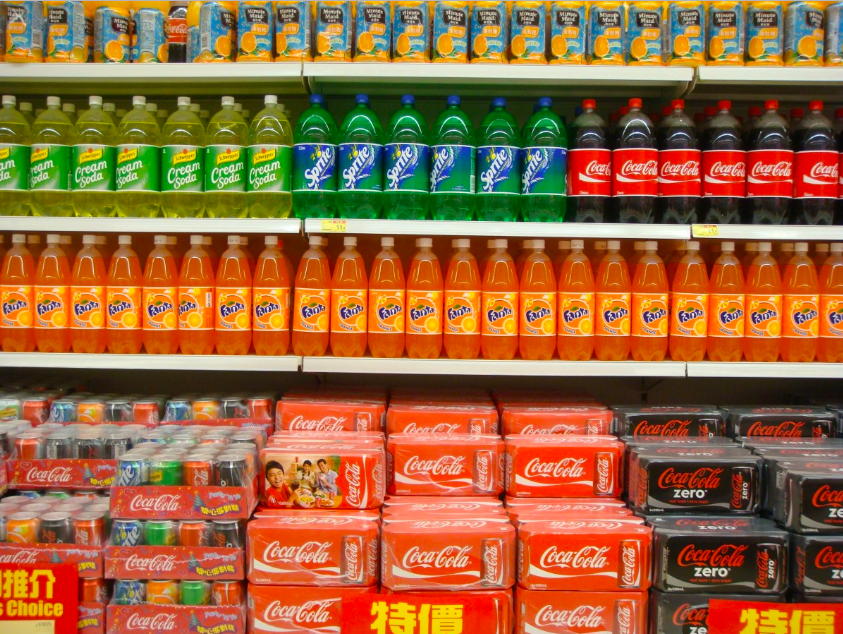Despite revenue growth, PepsiCo and Coca-Cola’s sales volume are in a lull

While revenue figures from PepsiCo and Coca-Cola painted a relatively rosy picture, their sales volumes have gone down or stayed relatively stagnant.
Volumes declined 3% for PepsiCo’s food segment and rose 1% for beverages. Coca-Cola, on the other hand, saw global volume sales rise by 3% in the quarter. But volumes in North America were flat, while in Europe, the Middle East and Africa volumes dropped by 3%. Still, their net sales are experiencing a healthy growth in the first quarter with PepsiCo’s up 10.2% and Coca-Cola’s up 5%.
These figures coincide with the CPG giants’ continuous price hikes over the past few quarters. Coca-Cola reported an 11% hike in price/mix and PepsiCo’s bumped up its price/mix by 16%. The contrast between revenue and volume growth signals that much of their profits come from pricing actions.
“That essentially tells you that the vast majority of their gains are coming from price increases,” said Tim Campbell, director of industry insights at e-commerce management platform CommerceIQ. “Coca-Cola and Pepsi themselves are facing inflation in the form of rising costs, but I don’t think that’s all of it. They also have the ability to raise prices a bit beyond that, because of the power of their brands.”
Indeed, PepsiCo and Coca-Cola have been flexing their pricing powers and citing rising costs as the primary reason. Moreover, beverage and snack makers typically fare well during economic downturns due to consumers viewing their products as small luxuries. This strategy has led to continuous growth for both brands.
But demand has started to wane. For example, demand was down 2%for PepsiCo’s beverage business in North America and 5% for Quaker Foods North America. Coca-Cola CEO James Quincey said that the company plans to focus more on having volume growth.
“We see pricing moderating, which means in the context of markets like the U.S. or Europe is a reduction in the level of cycle price increases,” Quincey said during a call with investors and analysts. “We may as we go forward see slightly more promotions as we look for those consumers that are under pressure to offer them slightly better affordability options, but we’ll be balancing that with investments in premiumization options whether that be categories or packaging.”
Ad position: web_incontent_pos1
Coca-Cola has said that it expects price hikes to slow later this year as inflationary pressures begin cooling off. PepsiCo’s CEO Ramon Laguarta said that the pricing actions it took is “sufficient.”
“When it comes to pricing, as we said earlier in February, we have mostly taken the pricing already this year that we needed to cover for our cost increases, and that is where we stand at this point,” Laguarta told investors and analysts. “We’re seeing a deceleration of inflation not a reduction of cost.”
Charles Lewis Sizemore, chief investment officer of Sizemore Capital said that there are limits to to how high these CPG brands can raise prices. If prices climbed too high they run the risk of losing some of their customers to cheaper generic brands.
A report from consumer research platform Attest found that 80% of Americans think brands are using inflation to justify raising prices and 88% are willing to test different products to save money.
“At the end of the day, even when times are tough, people do have room in their budget for guilty little pleasures,” Sizemore said. “Those are things that people will make room for in their budget, even when times are tough.”
Ad position: web_incontent_pos2
In the coming months, Sizemore said one of the biggest challenges these retailers will face is balancing the fine line between raising prices and keeping their consumers satisfied.
Coca-Cola reiterated its previous forecast for the fiscal year. It expects to have organic revenue growth of 7% to 8%. For 2023, it expects to have a comparable earnings per share growth of 4% to 5%.
Meanwhile, PepsiCo raised its outlook for the rest of the year. The company said it expects its fiscal year organic revenue to grow 8%, up from its prior 6% projections. It also expects its core constant currency EPS to rise 9% from 8%.

